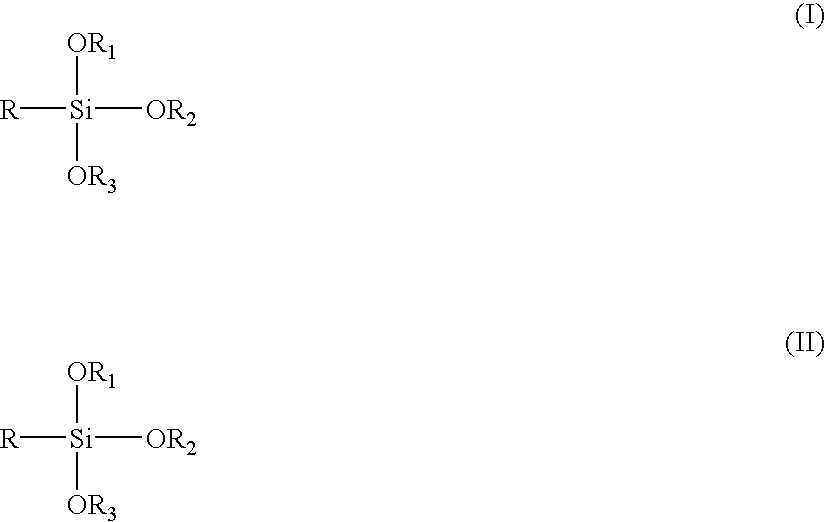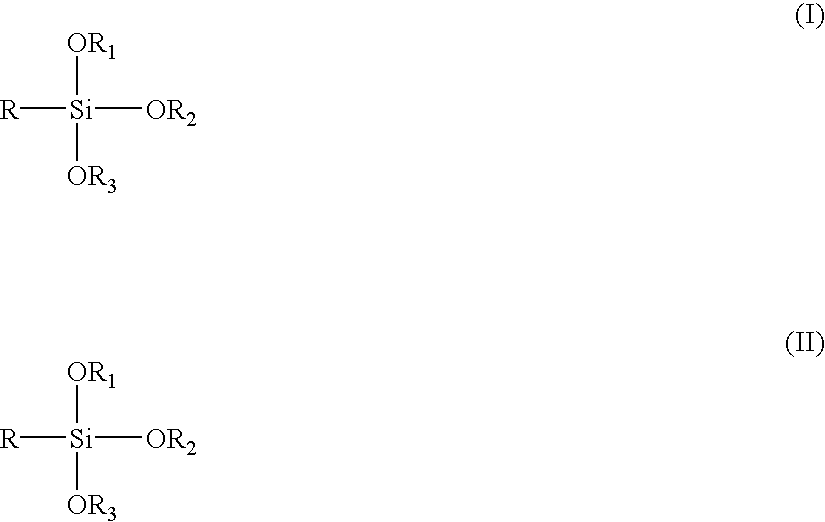Silanated copper foils, method of making, and use thereof
a technology of copper foil and shield layer, applied in the field of siliconated copper foil, can solve the problems of reduced bond strength (copper peel strength), patents that do not address the high acidic environment encountered, and achieve high filler loading and increase the cross-link density
- Summary
- Abstract
- Description
- Claims
- Application Information
AI Technical Summary
Benefits of technology
Problems solved by technology
Method used
Image
Examples
example 2
[0076] Copper foil from the same copper foil lot used in Example 1 was used in Example 2. The foil was coated with a solution comprising a mixture of 50 wt % Silquest A-174 silane and 50 wt % Silquest A-1170 silane from OSi Specialties, Inc., based on the total silane weight, at a total solution concentration of 9 wt % silane in water / ethanol (60 / 40, by wt) solvent. The silane solution was applied on a pilot plant coating line using a #8 wire wound rod with a web speed of 15 feet / min. The resulting silanated copper foil was dried by passing it through a three-zone air circulating oven with an exit temperature set in the range of 98 to 110.degree. C.
example 3
[0077] Example 3 was prepared as described in Example 2 except the silane coating was A-174 silane from OSi Specialties, Inc. at a concentration of 5 wt % silane in ethanol.
example 5
[0079] Example 5 was prepared as described in Example 2, except the copper foil employed was TW copper foil, the low roughness copper foil used in Comparative Example 4.
PUM
| Property | Measurement | Unit |
|---|---|---|
| thick | aaaaa | aaaaa |
| thicknesses | aaaaa | aaaaa |
| temperature | aaaaa | aaaaa |
Abstract
Description
Claims
Application Information
 Login to View More
Login to View More - R&D
- Intellectual Property
- Life Sciences
- Materials
- Tech Scout
- Unparalleled Data Quality
- Higher Quality Content
- 60% Fewer Hallucinations
Browse by: Latest US Patents, China's latest patents, Technical Efficacy Thesaurus, Application Domain, Technology Topic, Popular Technical Reports.
© 2025 PatSnap. All rights reserved.Legal|Privacy policy|Modern Slavery Act Transparency Statement|Sitemap|About US| Contact US: help@patsnap.com



